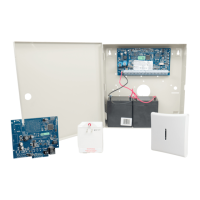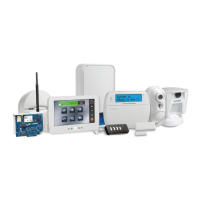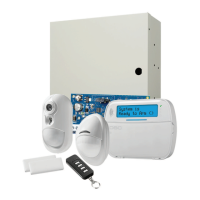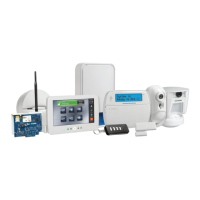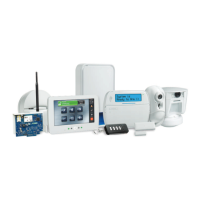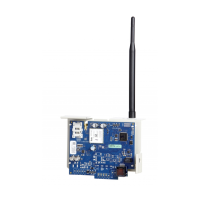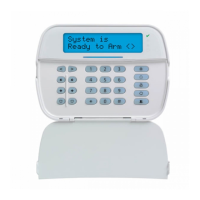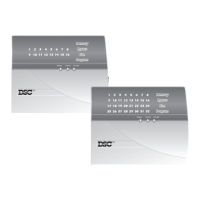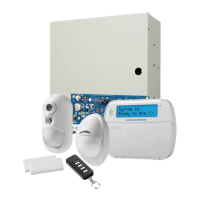Section 5: Programming
[808] HSM2955 Label
Use this section to create a custom label for the 2-way wireless transceiver.
[809][001]-[004] HS2300 Power Supply Label
Use this section to create custom labels for power supplies on the system. Select 001-004 for power supply 1-4.
[810][001]-[004] HS2204 High-Current Output Supply Label
Use this section to create custom labels for high-current output supplies on the system. Select 001-004 for output supply 1-4.
[815] Alternate Communicator Label
Use this section to create a custom label for the alternate communicator.
[820][001]-[016] Siren Labels
Use this section to create custom labels for sirens on the system. Select 001-016 for sirens 1-16.
[821][001]-[008] Repeater Labels
Use this section to create custom labels for wireless repeaters on the system. Select 001-008 for repeater 1-8.
[999][Installer Code][999] Default Labels
This section is used to return all labels to factory settings. Installer code is required to verify deletion.
5.3.2 Zone Setup
The following section describes zone programming options. To program a zone type, first enter section [001] and then enter
a 3 digit zone number from 001 - 128. After entering a new zone type for the desired zone number, the keypad will auto-
matically advance to the next zone.
[001] Zone Types
A zone type defines how a zone operates within the system and how it responds when triggered.
[001]-[128] Select Zone
Every zone on the system must be assigned a zone type. The available zone types are listed below.
000 – Null Zone
Assign to all unused zones.
001 – Delay 1
Commonly assigned to primary points of entry. Follows entry delay 1 and exit delay timers (section [005]). Arming the alarm
system starts the exit delay timer. After the exit delay has expired, opening the door starts the entry delay timer. During entry
delay, the keypad buzzer prompts the user to disarm the system.
002 – Delay 2
Commonly assigned to secondary points of entry (further from the keypad). Follows entry delay 2 timer (section [005]).
003 – Instant
Commonly used for perimeter doors and windows, this zone type follows the exit delay. The alarm is triggered instantly if the
zone is tripped after the exit delay expires.
004 – Interior
Commonly assigned to interior motion sensors near a point of entry, such as a foyer or hallway, that must be accessed to
reach the keypad. The alarm is activated if the system is armed and a delay type zone (e.g., front door) is not tripped first, or if
the entry/exit timer expires before the alarm is disarmed. Otherwise, the zone is instant if tripped.
005 – Interior Stay/Away
Similar to Interior zone type except that the system bypasses the zone when armed in Stay mode. Commonly used to activ-
ate perimeter zones while permitting free movement throughout the interior.
006 – Delay Stay/Away
Similar to delay 1 except that the zone is bypassed when armed in Stay mode. Commonly used with motion detectors that
cover an entry point.
- 64 -
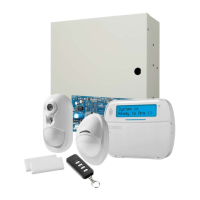
